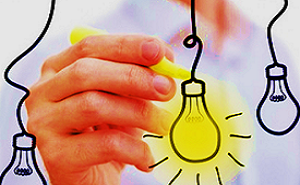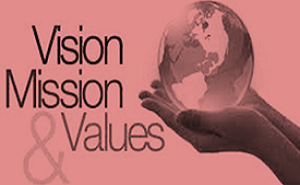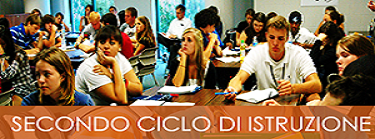1st session abstracts

The “two cultures”: a fairly recent question
 The problem of the relationship between the “two cultures”, the humanistic and the scientific, remains unsolved, even at an institutional level and throughout the school career. Indeed it crosses the whole Western history, but we must also bear in mind that the split between humanistic and scientific culture is relatively recent, since it dates back to the last three centuries, while, before then, their union covered about two thousand years.
The problem of the relationship between the “two cultures”, the humanistic and the scientific, remains unsolved, even at an institutional level and throughout the school career. Indeed it crosses the whole Western history, but we must also bear in mind that the split between humanistic and scientific culture is relatively recent, since it dates back to the last three centuries, while, before then, their union covered about two thousand years.
So, in front of this unnatural divide, it is necessary to make the problem emerge in order to try to face it in all its complexity.
First of all, the critical questioning about the dichotomy between the “two cultures” should allow us to understand how this divide has been assumed as a de facto reality without any explicit presentation or theoretical explanation.
The methodological basis for the dichotomy between the two cultures
 The methodological basis which keeps the two cultures still living apart, both in schools and universities, lies in the fact that the teaching of sciences is absolutely de-historicised, while the teaching of humanities is strongly historicized. In this way the teaching practice itself nourishes and sustains this distorted image of the school subjects: scientific subjects are studied and understood without considering their historical development, while the study of the humanistic subjects is deeply rooted in their historical background. So the scientific subjects (for example mathematics) are studied in their mere algorithmic aspects, while humanities could be understood only through an adequate historicization of their content
The methodological basis which keeps the two cultures still living apart, both in schools and universities, lies in the fact that the teaching of sciences is absolutely de-historicised, while the teaching of humanities is strongly historicized. In this way the teaching practice itself nourishes and sustains this distorted image of the school subjects: scientific subjects are studied and understood without considering their historical development, while the study of the humanistic subjects is deeply rooted in their historical background. So the scientific subjects (for example mathematics) are studied in their mere algorithmic aspects, while humanities could be understood only through an adequate historicization of their content
The reasons for a scientific humanism
 This cultural split can be put in crisis only facing it from a different point of view, i.e that of a scientific humanism. Only scientific humanism can let the intrinsically unitary character of knowledge emerge. A knowledge which lives and develops through a multilateral approach, able to contaminate the different subjects in a deep critical study of what is to be learned. In this way, it is possible to overcome the restricted study of single subjects, as the school itself becomes a conceptual laboratory in which critical analysis of knowledge becomes its beating heart.
This cultural split can be put in crisis only facing it from a different point of view, i.e that of a scientific humanism. Only scientific humanism can let the intrinsically unitary character of knowledge emerge. A knowledge which lives and develops through a multilateral approach, able to contaminate the different subjects in a deep critical study of what is to be learned. In this way, it is possible to overcome the restricted study of single subjects, as the school itself becomes a conceptual laboratory in which critical analysis of knowledge becomes its beating heart.

 The OECD has launched the OECD Learning Compass 2030, which has been co-created together with a global community with multi-stakeholders from more than 30 countries. The OECD Learning Compass 2030 sets out an aspirational vision of the future in which today’s students will thrive and shape a better future with their own “agency” . The Compass also sets out the types of competencies those students will need to navigate themselves in the world, which is increasingly becoming volatile, uncertain, complex and ambiguous (often represented as “VUCA”) as changes are accelerated by technological, economic, social, and cultural changes. The sense of agency and the types of competencies aspired in the Learning Compass 2030 are those human qualities that are believed to be not easily replaced by artificial intelligence and thus remain as the qualities of human values.
The OECD has launched the OECD Learning Compass 2030, which has been co-created together with a global community with multi-stakeholders from more than 30 countries. The OECD Learning Compass 2030 sets out an aspirational vision of the future in which today’s students will thrive and shape a better future with their own “agency” . The Compass also sets out the types of competencies those students will need to navigate themselves in the world, which is increasingly becoming volatile, uncertain, complex and ambiguous (often represented as “VUCA”) as changes are accelerated by technological, economic, social, and cultural changes. The sense of agency and the types of competencies aspired in the Learning Compass 2030 are those human qualities that are believed to be not easily replaced by artificial intelligence and thus remain as the qualities of human values.
The OECD also works with countries to tackle curriculum issues today’s students, teachers, schools, district leaders, national and regional government representatives face. These issues include:
- curriculum overload,
- time lag between today’s curriculum and future needs,
- curriculum flexibility and autonomy,
- embedding values into curriculum,
- ensuring equity in innovating curriculum and
- ensuring effective implementation.
In analysing these issues, a set of 12 design principles emerged that can endure across time and across different countries and cultures, which will be shared at the ADI Seminar.

Rationale for Change:
 Research has shown us that students are actively disengaged during their careers in K-12 education; in fact, the more time they spend in school the more disengaged they become. The rates of mental health issues in adolescents is on the rise, and Generation Z children have a learning profile that does not fit the current educational model that they are forced to attend. Combine these facts with huge societal changes affecting the citizens of the world, what is an innovative alternative to the prescribed and legacy school system of the 20th still present in many countries? Is it not time for school leaders to have the courage to move in a new direction? It requires them to shift their assumptions on the role of school, teachers and how students learn best.
Research has shown us that students are actively disengaged during their careers in K-12 education; in fact, the more time they spend in school the more disengaged they become. The rates of mental health issues in adolescents is on the rise, and Generation Z children have a learning profile that does not fit the current educational model that they are forced to attend. Combine these facts with huge societal changes affecting the citizens of the world, what is an innovative alternative to the prescribed and legacy school system of the 20th still present in many countries? Is it not time for school leaders to have the courage to move in a new direction? It requires them to shift their assumptions on the role of school, teachers and how students learn best.
Evolution of Think Global School
 Can you think back to a time in your childhood when learning was fun, exciting, and creative? A time when your days were filled with so many questions that you were left in a constant state of awe and wonderment? At THINK Global School, we wanted to rekindle that passion you possessed as a child through a school concept unlike any other on earth. By utilizing progressive educational concepts like project- and place-based learning, we reassert you, the student, as the primary architect of your learning.
Can you think back to a time in your childhood when learning was fun, exciting, and creative? A time when your days were filled with so many questions that you were left in a constant state of awe and wonderment? At THINK Global School, we wanted to rekindle that passion you possessed as a child through a school concept unlike any other on earth. By utilizing progressive educational concepts like project- and place-based learning, we reassert you, the student, as the primary architect of your learning.
We believe that education should connect you to the world around you, providing context and insight into today’s most pressing issues. Drawing from the 21st Century’s most innovative and effective educational models, the Changemaker Curriculum combines high academic standards with interdisciplinary, project-based learning – so your environment informs your studies and your studies give meaning to your environment.
Come explore the story of TGS, how a group of dedicated progressive educators decided to flip the school system on its head. To actually give students real choice and voice throughout their day at school and see the results and outcomes it produced.
Our Mission and Values
 THINK Global School challenges learners, through firsthand experiences of global travel, to become compassionate individuals who are curious and knowledgeable about the world and motivated to effect meaningful change.
THINK Global School challenges learners, through firsthand experiences of global travel, to become compassionate individuals who are curious and knowledgeable about the world and motivated to effect meaningful change.
Meraki (Greek)
Put all of yourself – your soul, creativity and love – into your work.
Satya (Sanskrit)
Live truth – in a way that is honest, steadfast, and uplifting to others.
求知欲 Qiú Zhi Yù (Mandarin)
Thirst for knowledge – be open, be curious, and challenge assumptions.
Empathy
Treat others with understanding, compassion, and respect.
Grit
Persevere – embrace challenges with passion and courage.
改善 Kaizen (Japanese)
Continually improve – be self-aware, responsible, and disciplined.
Ubuntu (Zulu)
Connect to a greater whole – in mutual support and community.
Come explore the research behind our intentional design decisions.

The curricula of the Italian school system were subject to reform at different times: in 2012 with regard to the first cycle of education ( primary school and junior school) and in 2010 for the second cycle (upper secondary school).
However, vocational education pathways were renewed in 2017 to better fit the needs of the labour market and employability.
 Primary and junior schools have privileged an integrated approach to curricular contents which together contribute to the definition of the learning objectives and competency goals.
Primary and junior schools have privileged an integrated approach to curricular contents which together contribute to the definition of the learning objectives and competency goals.
 Instead, in upper secondary schools , with the exception of vocational education, curriculum subjects are still strictly separated, which makes it difficult to grasp the real contribution of each of them to the definition of the profile of learning in each course of study.
Instead, in upper secondary schools , with the exception of vocational education, curriculum subjects are still strictly separated, which makes it difficult to grasp the real contribution of each of them to the definition of the profile of learning in each course of study.

Shanghai has an outstanding performance on PISA, which attracts worldwide attention. What are primary factors related to maintaining and enhancing relatively higher level of quality and equity in basic education of Shanghai from the perspective of institution and policy?
There are underlying reasons beyond PISA data result. That is, we have a high quality and effective teaching force and equip them with well-organized teacher’s professional development system. Just like Friedman, author of “ The World is Flat” revealed that the secret of Shanghai after his visit in 2013 lies in institution and culture which are invisible and consistently embedded across school system to make teachers in Shanghai deeply committed to training, peer learning, continuous growth, demanding standard for leadership and enjoy a respectful and rewarding social status.

How we develop such high quality and high-effectiveness teaching forces? Meanwhile, we also look at our weakness, which we need to address through findings from large international education assessment. We observed that student’s learning burden is relatively heavy and margin benefit of learning is diminishing with the increase of learning time. In addition, teacher’s use of ICT has not improved instructional effectiveness. Technology is not playing an important role in transforming our classroom from teacher-directed to student centered. What other challenges for us to shape a future-oriented education system?



